
Gentrification hasn’t yet swept through Sham Shui Po, one of Hong Kong’s least affluent working class neighbourhoods in Kowloon. As one of the more underprivileged areas in the city, it’s certainly a few steps removed from the comparative polish of Central or Tsim Sha Tsui, but that doesn’t mean that tourists won’t find anything to love here. In fact, those who make it a habit to seek out local secrets and peek behind Hong Kong’s veneer of ostentatious lights and glassy skyscrapers will probably end up spending their entire trip scouring the flea markets, learning about the city’s interesting housing policies, and getting a taste of the many high quality, Michelin approved cheap eats that line these streets.
Based off a recent trip, we’ve rounded up ten of our favourite things about Sham Shui Po, which mostly revolve around food but also highlight a thriving and authentic creative scene that provides deeper insight into Hong Kong as a whole. Get our your bucketlist and take note of these ones; they’ll have you falling in love with the hustle of Sham Shui Po and reiterating just how different Hong Kong’s neighbourhoods are from each other.
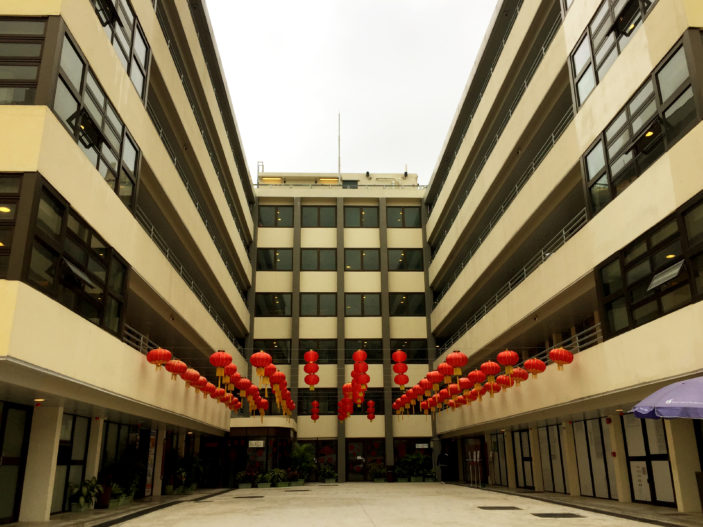
Peer into History at Mei Ho House
Take an insightful tour of the neighbourhood with Walk Hong Kong and this will likely be the first stop, located in the smaller area of Shek Kip Mei. Mei Ho House is a historic building with a complicated history.
As the only surviving Mark I H-shaped resettlement block in the neighbourhood, it has been given a new life as both a 129-room youth hostel, cafe and a fascinating, humbling, (free-entry) heritage museum providing insight into the neighbourhoods controversial public housing history through the 1950s and 1970s. There’s also plenty of information on the tragic Shek Kip Mei fire of 1953, which played a big role in housing policies, as well as eye opening recreations of historic living quarters.
Keen photographers should take note that the clearly marked stairs on the side of the building give access to a quick hike up Garden Hill, which rises above Sham Shui Po for a stunning view of the high-rise and low-rise buildings below. From here, you get a very good idea of Sham Shui Po’s mostly low-rise cityscape, which was largely influenced by height restrictions due to it being in the flight path of the old, and notorious, Kai Tak Airport.

Take a Workshop at Jockey Club Creative Arts Centre
The JCCAC doesn’t look like your modern arts precinct or urban development (like Central’s stunning Tai Kwun), but this adaptive reuse project in Shek Kip Mei is one of Hong Kong’s best hubs for energetic creatives, makers and crafters.
Once inside it becomes clear this is an incubator for the arts and crafts, even if the façade isn’t particularly indicative of such a thing. Workshops and showrooms populate the former factory building, hiding plenty of vibrant characters and insightful local crafts behind these plain and mostly unmarked doors.
There are more than 100 artists and art organisations here, spread across a wide array of disciplines like painting, sculpturing, ceramics, printmaking, glass art, photography, animation, music, dance and drama. There are also regular public events, stage performances and exhibitions, like the annual JCCAC Arts Festival each December. Visitors are highly advised to check out the event calander for the basement-level Black Box Theatre or head to the building’s website to book into a workshop.
Test Your Bargaining Skills
The many busy streets of Sham Shui Po almost seem to be carefully curated according to theme. It makes shopping that much more easier, which is why you’ll always find eager bargain hunters roaming around the neighbourhood from early morning to late at night. Keep in mind that this is a neighbourhood that was once thriving with ancillary industries, with the 50s and 60s seeing plenty of shops selling buttons, buckles, fabric and more. It became the heart of Hong Kong’s textile trade, and though that industry is on the decline, it still very much beats with resilience.
Fashion lovers will adore the vintage-minded stalls of Cheung Sha Wan Road, where clothes of all kinds can be found for jaw-droppingly low prices. Tech heads should head below Fuk Wa Street into the labyrinth of the Golden Computer Arcade, a densely packed electronic wonderland which has earned Shim Shui Po the ambitious moniker of the “Akihabara of Hong Kong”. You’ve also got Fuk Wing Street, widely known as Toy Street for the immense spread of shops touting toys, gifts, souvenirs, and home decorations. Then there’s Ya Chau Street, perfect for the do-it-yourself crowd with an almost overwhelming selection of necessary fashion ingredients like stones, pearls, features, buttons, beads and other embellishments.
Last but not least is the flea market that extends the length of Apilu Street, and its a veritable treasure trove of discarded items like various tools, leather goods, camera accessories, furniture, electronic components, jewellery, and more.
There are plenty of modern boutiques sitting alongside these more more-is-more stalls. Doughnut is one that fashion lovers should pay particular attention too, a small beautifully lit shop squeezed between pre-war buildings and food stalls, offering up beautiful high quality bags, laptop cases, travel accessories and luggage. It has a strong following throughout Asia, and more recently Europe, so checking out their Hong Kong flagship and showroom is a must.
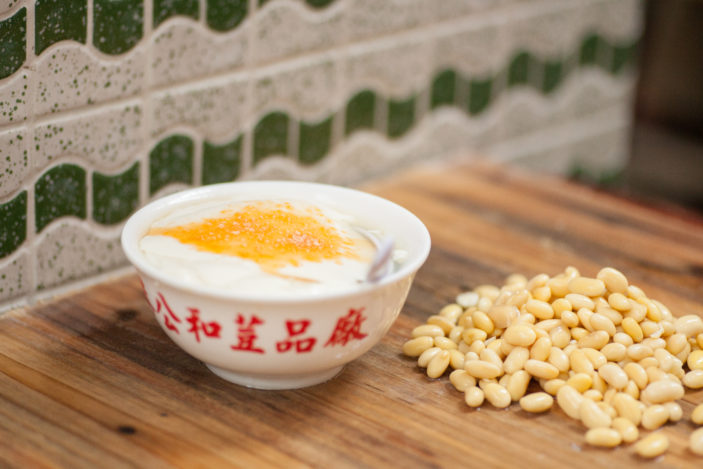
Taste the Magic of Kung Wo Soy Products
Not a fan of tofu? The answer doesn’t matter; you will be after a visit to Kung Wo Soy Products, one of Sham Shui Po’s most essential eating spots, serving Michelin approved street food that is so time-honoured across generations that eating here has become a rite of passage.
It’s a weathered dining space – rustic and quaint, as most of the best restaurants here are – that will be packed with locals of all ages, at any time of day. That’s because they all know that this is the spot for the – and this is not an exaggeration – best tofu pudding one will likely ever have in their life. Exceptionally silky and packed full of that rich soy bean flavour, made even better with a sprinkle of brown or raw cane sugar to sweeten things up. During the city’s famously sticky heat, it also has a welcome cooling effect.
You’d be wise to scoop up some of the other options on their menu too, from the sweet homemade (sugarless) soy milk – served hot or cold – to the comforting deep-fried tofu and fried tofu puffs stuffed with delicious fish paste.
It’s pretty much a requirement for non-touristy neighbourhoods around the world to host one of the best burger joints of their respective city. It’s why you’ll find a lot of foodies venturing out of the usual tourist spots to seek out interesting interpretations, or faithful recreations, of the ubiquitous and universally adored food. For Sham Shui Po, that is Burgerman on Yen Chow Street, sticking close to American-style burgers done very well.
Their signature double patty trucker burger is one of the more popular orders here, towering above its peers like the crisp foie gras beef burger and the smoky Houston BBQ burger. They’ve got enough to satisfy any taste though, from vegetarian burgers to even non-burger options like generous pasta dishes. Or you can just grab some of their sweet potato fries and buffalo wings to save some of that appetite for elsewhere.
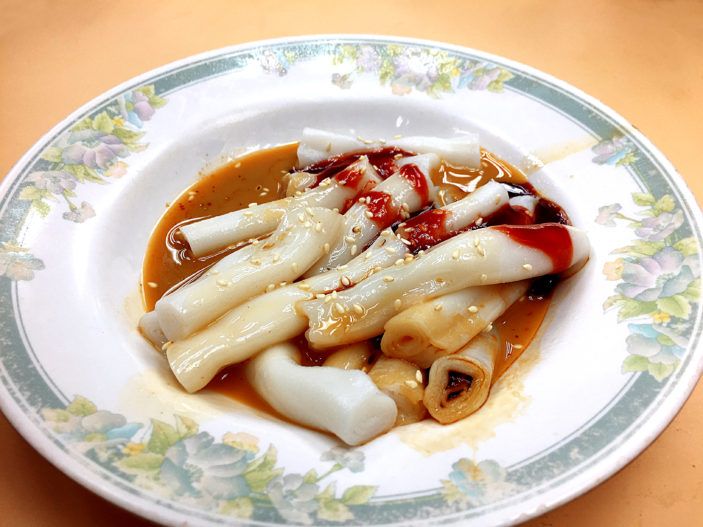
Tuck into Cheong Fun at Hop Yik Tai
Michelin approved cheong fun (steamed rice rolls)? Yes please! Chop Yik Tai is a very affordable local favourite and one of many celebrated street food spots in Sham Shui Po, easily foretold by the buzzing queues outside. Of course, if you order anything make it the signature cheong fun which is made fresh everyday and is served with three sauces: sweet, sesame and soy, and maybe get some curry fishballs and dumplings on the side. The cheong fun – served as either small, medium or large plates – is smooth and spongey, soaking up the triple-sauce combo which gives it that really loaded palette. Just one taste and its easy to understand why this is one of the busiest places in Sham Shui Po.
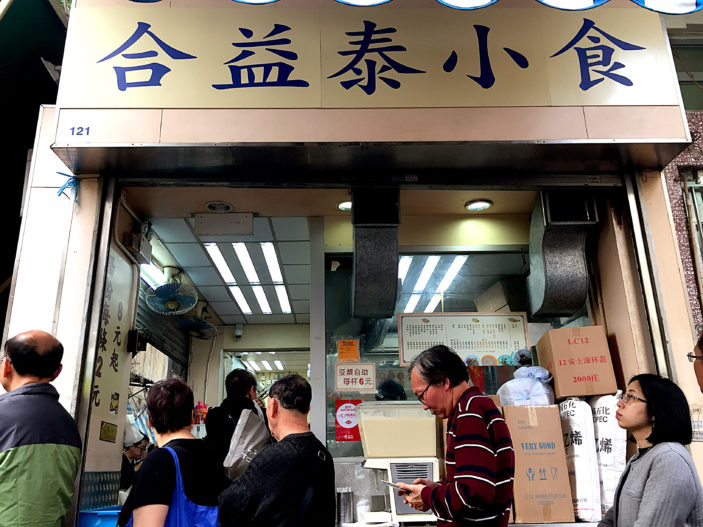
Start or End Your Day at Sun Hang Yuen
Another one of the neighbourhood’s most famous cha chaan tengs, Sun Hang Yuen is a 24/7 spot with what is widely considered the best corned beef and scrambled egg sandwich in all of Hong Kong. Given the amount of cha chaan teng spread all over the city, that’s nothing to be taken lightly. There’s some very fine comfort food to be had here, and you’ll truly feel like you’re living a locals life as you stroll into the unadorned space and start ordering up a feast. Whatever you order, just cap it all off with some red bean ice and milk tea.
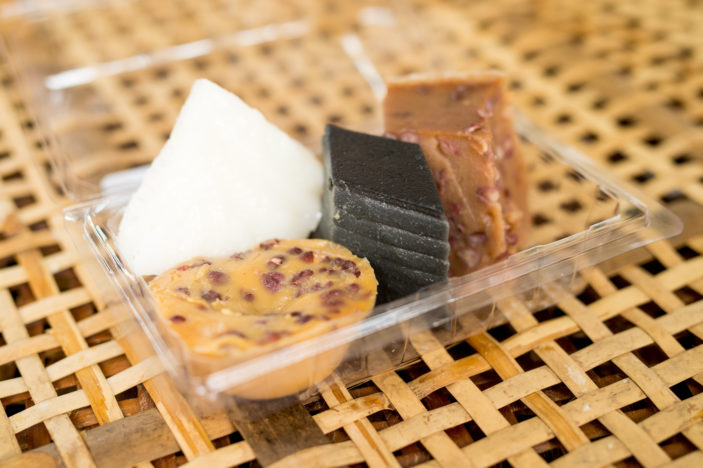
Treat Yourself to Desserts at Kwan Kee Store
Yep, it’s another Michelin guide street food spot, but this time we move to chai ko (steamed rice pudding) with the great Kwan Kee Store. Much like the other eateries on this list, you can really tell that this place has a storied history behind it, as the modestly sized bakery creaks and groans with old age. The best thing to order here is the brown sugar red bean pudding, artfully made and highly textural with its wobbly, jelly-like body and crunchy red beans. For something sweeter, grab one of their exceptional white sugar or bowl cakes, both local favourites since the stall moved here in 1982.
Indulge in Dim Sum at Tim Ho Wan
Though it wasn’t the first store for Tim Ho Wan (that distinction lies in the more touristy area of Mong Kok), the Sham Shui Po store for the famous Michelin starred dim-sum destination is definitely one of the most visited. Large, energetic and open planned, it’s perfect as a lunch stop while exploring the neighbourhood. Those who have it before should already know what to expect: delicious, perfectly made dim-sum that won’t at all dent the wallet.
Keep in mind that it’s cash only here, so after you wipe the crumbs of your 10th baked BBQ pork buns away, be sure you’ve got enough Hong Kong Dollars on you. You won’t need many though; after all, this is still one of the cheapest (second; after Liao Fan Hong Kong Soya Sauce Chicken Rice & Noodle) Michelin star dining experiences in the world.
Slurp on Beef Noodle and Pig Liver at Wai Kee Noodle Café
So popular they had to open up another store right next to the original, Wai Kee is a true dining icon for Kowloon, and likely one of the most memorable casual dining spots (cha chaan tengs) you’ll find in Hong Kong. Their most ordered dish is the beef noodle soup with pig liver, but really there’s so much variety here that it’s worth taking your time and not just jumping straight to the signature. You can choose from many different types of noodles, like macaroni and vermicelli, and top it up with the likes of ham, eggs, and sausages. Save room for some of their kaya French toast, it uses a paste freshly made each day from a mixture of chicken and duck eggs, sugar, water and butter and is the kind of quick snack that you’ll rave about long after you’ve flown home.
—
Aussies wanting to head to Hong Kong and experience the city’s diverse neighbourhoods should take note that Cathay Pacific are currently having a sale on flights from Sydney, Melbourne, Brisbane or Adelaide. You can check it out HERE.
The writer was a guest of Hong Kong Tourism Board.
Images supplied.
